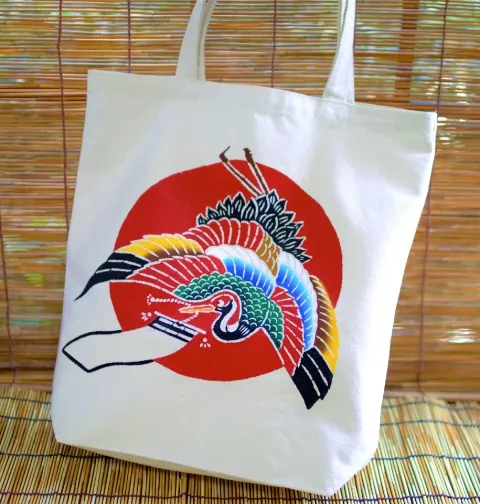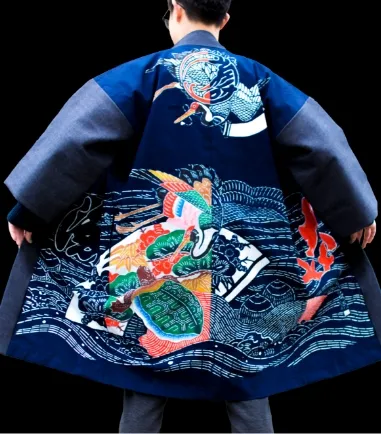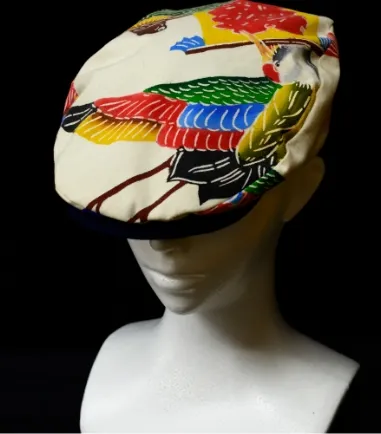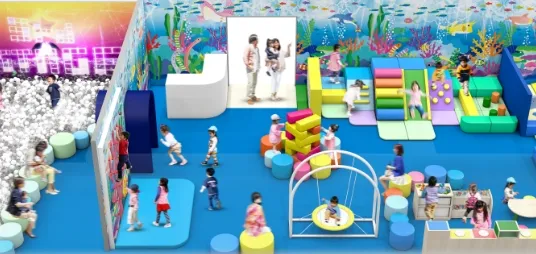In the fishing town of Kamogawa-shi Chiba,
Since the late Edo period, the name Maiwai has
There is a culture of giving cloth as gifts.
The craftsmen who dye the celebration paper are still alive today.
To keep the tradition alive
I am trying my best.

Born in the late Edo period
Unique fishing culture
In the late Edo period, large catches of sardines were landed on Kamogawa, which faces the Pacific Ocean, and many fishing bosses made their fortunes from sardines. When an exceptionally large catch was made, the fishing bosses and ship owners would give the fishermen cloth called Maniwai as a gift and hold a celebratory banquet.
Fishermen who received the gifts would have them made into long garments (kimonos long enough to cover the ankles) or hanten coats, which they would wear when visiting shrines and temples on New Year's Day the following year, or when drinking at the homes of fishing bosses. This custom is said to have spread to fishing towns along the Pacific coast, from Aomori in the north to Shizuoka in the south, and continued until before the war.




Fisheries support agriculture,
Cotton grown for the festival
Kamogawa was once a cotton-producing region, which was used to make bolts of cloth. The large quantities of sardines landed here were dried in the sun to use as fertilizer to grow cotton. Indigo balls used in indigo dyeing were delivered by sea from Tokushima, where they were produced. The fishing, agricultural, and transportation industries were successfully linked together, and thus Kamogawa Manjuzome was born.
The production process remains the same today as it was in the past. First, a pattern inherited from the ancestors is transferred onto the fabric. Glue is placed on top of the pattern, and color is applied to the areas where there is no glue. Next, glue is placed on top of the pattern, and when the glue has dried, the fabric is dyed with indigo and dried. After two to three weeks, the fabric is dyed with indigo. Kamogawa Manju-zome, which is completed through more than 10 processes, must have been a source of pride for the fishermen.




The highly artistic designs are
Influence of Edo artists
Kamogawa Maiwai-zome is said to have been designed by artists of the Kano school. There are over 200 designs, including the crane and turtle, Takasago, Dragon Palace, Ebisu and Daikoku, and some relatively new designs include the Japanese and American flags, the Chinese zodiac, and killer whales. Now that the custom of Maiwai-zome has declined, in addition to large-scale celebrations, some people give hanten coats tailored to celebrate the 88th and 70th birthdays. Fashion items such as hats and bags have also been created using the Maiwai-zome technique. Maiwai-frame frames with part of the pattern framed are also perfect for housewarmings and store openings.
Sometimes it's cool and wonderful to go on a trip to visit the craftsmen who are carrying on traditions in new ways.





Try your hand at color-dyeing with Kamogawa Manjuzome!
Currently, there are two dyeing shops remaining in Kamogawa that continue to teach the techniques of Kamogawa Manjuzome. At one of these shops, Suzuzome, you can experience one of the dyeing processes, coloring. You can choose one of the following designs: a crane, a turtle, or a shimenawa. Once completed, you can frame it and display it in your room or give it as a gift. Create your own unique Kamogawa Manjuzome, one of a kind in the world. KAMENOI HOTEL KAMOGAWA.

Provided by:
Chiba Tourism and Products Association
[Kamogawa Manjuzome Suzuzome Coloring Experience]
Duration: Approximately 1 to 2 hours / Price: 1,650 to 3,850 yen (tax included) *For groups of 5 or more, advanced reservations required
Click here for details >>>
Recommended Hotel
Recommended hotels
Whether in your room or the large bath,
Have the Minami Boso Sea all to yourself
KAMENOI HOTEL KAMOGAWA
Abalone, spiny lobster, and other fresh bounty from the sea
As much as you like
KAMENOI HOTEL KAMOGAWA, which will renovate Guest rooms, kids' park, and lobby on April 24, 2025, will serve Food centered around fresh seafood, fitting for a seaside town.
It is served in the buffet restaurant.
Dinner is all-you-can-eat with about 60 different dishes, including red-eye fish soup, boiled red-eye fish, namero, grilled dried fish skewers, and Churrasco made with Chiba brand pork.
Kamogawa Manju-zome hanten coats on display give a sense of the history and tradition of Kamogawa, and even seem to convey the feelings of the fishermen.




Creating memories with your family
In a specially designed room
Just gaze at the sea. If you want to spend your holiday like that, we recommend the deluxe room with open-air bath (with sauna), which was renovated in April 2025. Enjoy the magnificent view while lying on the bed or soaking in the open-air bath. If you want to revitalize your mind and body, be sure to try the sauna.
There is also an ocean-themed kids' room, kids' park, and dog-friendly room, making it the perfect place to create memories with your family.
 Kids Park
Kids Park Deluxe room with open-air bath (with sauna)
Deluxe room with open-air bath (with sauna) kids room
kids roomNearby Spots
Nearby spots
The serene Uchibo and the majestic Sotobo.
Enjoy the magnificent seascape
The Boso Peninsula is cool in summer and warm in winter. It is surrounded by the gentle Uchibou facing Tokyo Bay and the majestic Sotobou facing the Pacific Ocean, and each region offers different seascapes. Seafood such as turban shells, abalone, and spiny lobster are also abundant. Sea bream live in Uchiura Bay, and are treasured by locals as an incarnation of Saint Nichiren.
A boat ride across from Futomihama on Kamogawa leads to Niemon Island, where only the family of Hirano Niemon once lived. On the island, you can find Kagura Rock, where Saint Nichiren is said to have prayed to the rising sun, and the hole where Minamoto no Yoritomo hid after he was defeated in battle, so why not visit the island?




Kamogawa Sea World
An aquarium with about 800 species and 11,000 marine creatures. There are many areas to enjoy, including exhibits that realistically recreate the underwater world and shows where you can see the lively animals. It is about a 5-minute walk from the hotel.

Oyama Senmaida
The closest rice terraces to Tokyo, covering a vast area of approximately 30,000 m2. When planted in spring, the rice is filled with water and sparkles beautifully, and in autumn the rice turns golden yellow. One of Japan's 100 best rice terraces. Approximately 25 minutes by car from the hotel.

Kamogawa
Seaside Base
A commercial facility built on the Pacific Ocean. You can taste craft beer at the brewery and enjoy grilled seafood on the terrace at the restaurant. Kamogawa souvenirs, vegetables, local products, bread, etc. are also sold. About 10 minutes by car from the hotel.











